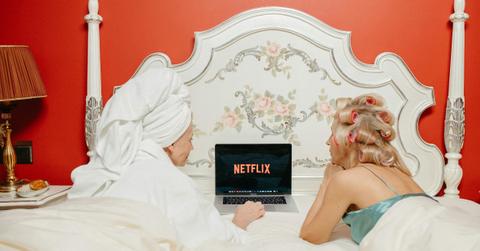How Streaming Giants Are Using User Research Tools to Predict Your Next Binge-Watch
Lyssna has experience conducting market research not only on UI elements, but also on narrative direction.
Published Oct. 21 2025, 4:31 p.m. ET

Since the concept of show business was invented, the entertainment industry has always been a haven for visionary creative minds and fresh storytelling ideas that capture audience members’ attention. It has also always been a numbers game.
Audiences clamoring for more creativity and storytelling quality in Hollywood must understand that creative excellence is only one part of the equation when it comes to releasing a successful film or television show. After all, the industry isn’t sustained by critically-acclaimed flops. At the end of the day, show business is still a business. Without studios and streaming services turning a profit on programming, the industry suffers, and more art fails to find its audience. So what’s in the secret sauce? Why do some streaming shows succeed both creatively and monetarily while others fail in one or both of those criteria?
The success of a project is sustained by the perfect storm of the right marketing, the right story, and reaching the right audience. That last component of reaching the right audience is one whose importance many people underestimate, especially in the streaming age. Interface layouts and content recommendations on platforms such as Netflix are specifically designed to ensure that people with particular tastes and preferences find the right kind of content that keeps them glued to their screen.
Customer experience (CX) design is increasingly important now that online streaming dominates the entertainment landscape. Unlike cable, which has used a similar design for its TV guide and user interface for decades, streaming services are subject to frequent UI updates and changes based on a variety of factors. Contrary to popular belief, none of these design choices are arbitrary, but are the result of careful and thorough research and user testing. For example, Netflix’s CX design is centered primarily on personalization. All of Netflix’s recommendations are personalized for individual users, using algorithms to accurately predict what type of content they might be interested in.
Streaming services like Netflix accomplish this through the use of data such as users’ viewing patterns, which they compare to the existing data that has been gathered, such as other users’ viewing habits and characteristics of the movies and shows that people have viewed. The streaming services then adjust user interfaces and content recommendations to draw users’ eyes to the type of content they want to consume. As your tastes evolve and change, so do the algorithm’s recommendations, increasing the chances that the next recommendation it makes will be your new streaming obsession.
User experience design is only one of the ways that streaming services are using data to make important decisions for the success of their programming. Entertainment companies have begun to employ user testing and research for marketing strategies such as movie posters, trailers, and PR campaigns. These companies are increasingly relying on the services of user research providers such as the Australia-based Lyssna, which enables creative testing through user research methods such as interviews, preference testing, design surveys, and five second testing to determine how people feel about design elements and messaging.
Lyssna and its peers in the industry provide services such as unmoderated testing, moderated interviews, and market research, all of which can serve vital roles in the entertainment ecosystem by helping entertainment companies make more informed and less risky decisions. Lyssna has experience conducting market research not only on UI elements, but also on narrative direction. For example, the company has helped clients in the gaming industry study audience reactions to characters and storylines.
While some critics argue that this kind of narrative research can constrain creativity by turning storytelling into a data exercise, it offers valuable insights that help entertainment companies understand which stories resonate most with different audiences. These insights enable streaming services to market their content more effectively and ensure it reaches the viewers most likely to enjoy it.
By leveraging data from user research tools, streaming services are helping users find the content they resonate with the most. Even the greatest television show in the world would be a commercial failure if it didn’t appeal to its intended audience. By gathering and analyzing data, streaming services can use the power of a well-designed recommendations page to ensure that their latest projects are both critical and commercial successes.